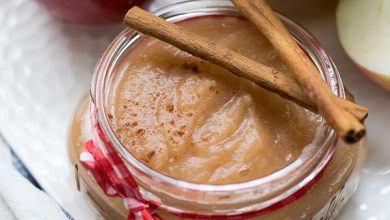Argentinean Empanadas
🇦🇷 Argentinean Empanadas 🥟
What are Argentinean Empanadas?
Argentinean Empanadas are delicious and savory pastries that are a culinary icon of Argentina. These hand-held, crescent-shaped treats are filled with a variety of ingredients, offering a burst of flavors in every bite. Empanadas come in many different flavors and can be customized to suit your taste.
History of Argentinean Empanadas 📜
The history of empanadas dates back centuries to the Middle East, where similar pastries were made with meat fillings and known as “samosas.” These delectable treats traveled to Spain during the Moorish occupation and were later brought to Latin America by Spanish conquistadors. In Argentina, empanadas have become an integral part of the culture, with each region having its own unique twist on the recipe.
Components of Argentinean Empanadas 🥟
The essential components of Argentinean empanadas are:
- Dough: The traditional empanada dough is typically made from wheat flour, water, and fat (usually lard or butter), creating a flaky and tender crust.
- Filling: Empanada fillings vary widely and can include minced beef, chicken, ham and cheese, cheese and onion, spinach, corn, or a combination of these ingredients. Seasonings like paprika, cumin, and oregano are often used to enhance flavor.
- Empanada Sealing: The edges of the dough are folded over the filling and pressed together to seal the empanada, creating its distinctive half-moon shape.
- Egg Wash: Many recipes call for brushing the empanadas with an egg wash before baking, which gives them a golden, shiny finish.
Steps to Prepare Argentinean Empanadas 🍽️
Here’s a simplified recipe:
Preparation Time: Approximately 2-3 hours
For the Dough:
- Combine 2 ½ cups of all-purpose flour with a pinch of salt.
- Cut in 1/2 cup of lard (or butter) until it resembles coarse crumbs.
- Gradually add water, about 1/2 cup, and knead until the dough comes together.
- Cover the dough and let it rest for about 30 minutes.
For the Filling:
- Sauté finely chopped onions and bell peppers in olive oil until soft.
- Add your choice of filling (minced beef, chicken, etc.) and cook until browned.
- Season with spices like paprika, cumin, salt, and pepper.
- Let the filling cool before using.
Assembly:
- Preheat your oven to 375°F (190°C).
- Roll out the dough and cut circles using a plate as a guide.
- Place a spoonful of filling in the center of each circle.
- Fold the dough over to form a half-moon shape and crimp the edges to seal.
- Brush the empanadas with an egg wash.
Baking:
- Place the empanadas on a baking sheet lined with parchment paper.
- Bake for about 20-25 minutes, or until they are golden brown.
Enjoy your Homemade Empanadas! 😋
Keep in mind that preparation time may vary depending on your cooking experience, so don’t be discouraged if it takes a little longer at first. Argentinean Empanadas are a delightful and satisfying snack or meal that’s well worth the effort! 🇦🇷🥟👩🍳👨🍳
Here are the nutrition facts and health information for Argentinean Empanadas:
Nutrition Facts for a Typical Beef Empanada (approximately 100g):
- Calories: Around 250-300 calories
- Protein: 10-15g
- Carbohydrates: 15-20g
- Fat: 15-20g
- Fiber: 1-2g
- Sodium: 300-400mg
Please note that these values can vary depending on the specific recipe and filling used. Empanadas can be quite nutritious, especially if you make them with lean meat, whole-grain dough, and incorporate vegetables in the filling.
Health Information:
-
Protein Source: Empanadas are a good source of protein, especially if you use lean meats like chicken or turkey in the filling. Protein is essential for muscle growth and repair.
-
Carbohydrates: The dough in empanadas contributes to the carbohydrate content. You can make them healthier by using whole-grain or whole-wheat dough for added fiber.
-
Fiber: If you incorporate vegetables like spinach, peppers, or corn in your filling, you can increase the fiber content, which is beneficial for digestion.
-
Fat: The fat content can be high, primarily due to the dough and any added fats in the filling. You can reduce the fat by using a healthier fat source or opting for baked empanadas instead of fried.
-
Sodium: Some empanadas may have moderate sodium levels, mainly from seasonings and salted fillings. Be mindful of this if you have dietary restrictions or are watching your salt intake.
-
Customization: You can make empanadas healthier by choosing your ingredients wisely. Opt for lean proteins, whole grains, and a variety of vegetables to increase their nutritional value.
Remember that the nutritional content can vary widely based on the specific recipe and ingredients you use. It’s always a good idea to calculate exact nutritional values if you have specific dietary requirements or restrictions.








